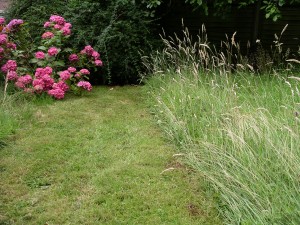Mowing your lawn is simple, right? Not so much. Grass is a living, breathing organism, and has very specific requirements. For instance, cutting your grass too short can make your lawn look bald or patchy, while letting it go makes your property look like a scrapyard. The key is to find that happy medium where your grass looks healthy but isn’t overgrown, and Mower Source has all the answers.
Mowing Height
Different climates have different grasses, and each one demands a different height for optimal growth. At the most basic, grass and the height it should be cut can be divided into cool season height and warm season height (when it grows the most).
One tip to use if you have no idea what kind of grass you have and still want to get the height right is to cut no more than one-third of the leaf. The reasoning for this is so grass can grow at its optimal rate during its peak growing season. Cut more than that, and you’ll stunt the grass’s growth. Grass is a plant like any other, and cutting it the right amount will promote full, lush growth, while it can thin out and look patchy if you go too short.
It’s not absolutely crucial to know what kind of grass you have, as you can tell by how fast or slow it’s growing, as well as the climate you live in. But one good thing about knowing exactly what kind of grass you have is you can Google its tallest recommended height. By staying within those parameters, you’ll ensure deep, healthy roots, which means the grass can hold onto water more easily and space out so weeds can’t grow as readily.
Sharpen Those Blades
It’s no good knowing the theory behind proper grass height if the goods don’t match that. The duller the blades, the more of a tendency they’ll have to just bend the grass blades instead of actually cutting them. Plus, dull blades making you feel like you’re working 10 times harder with a fraction of the result.
Other tips to remember include:







